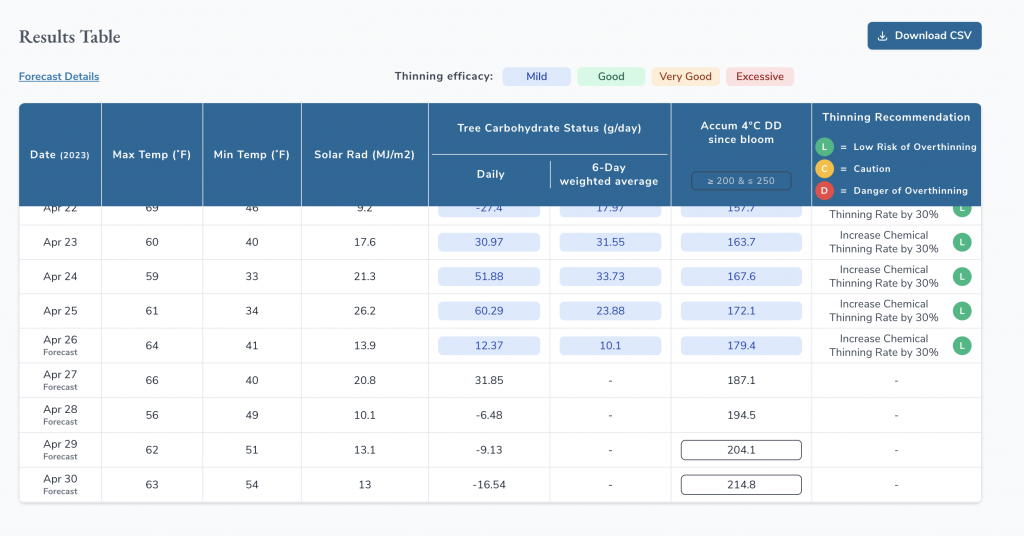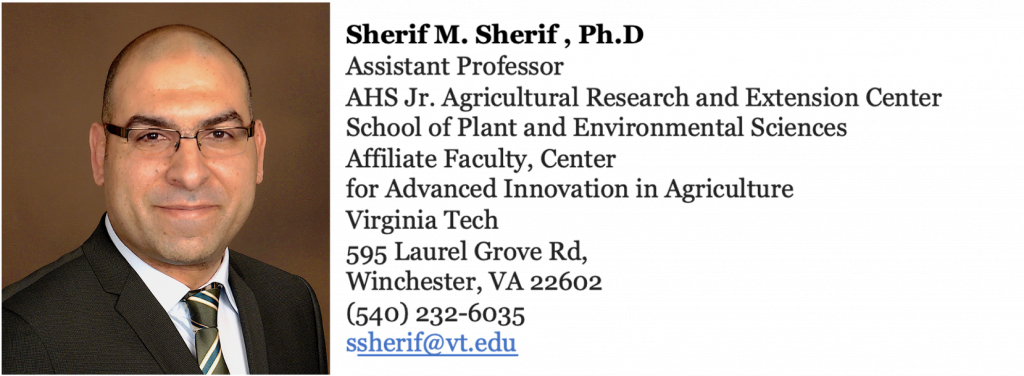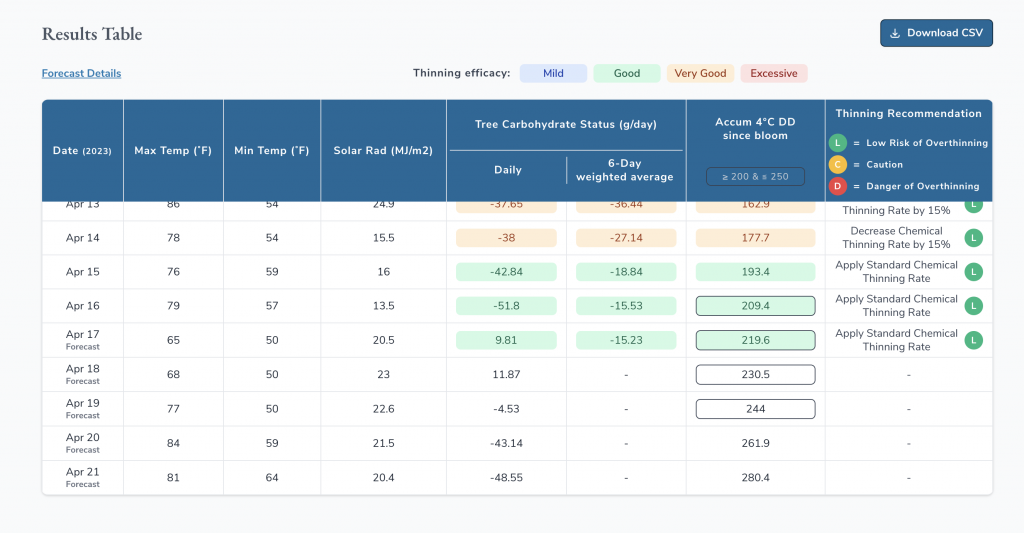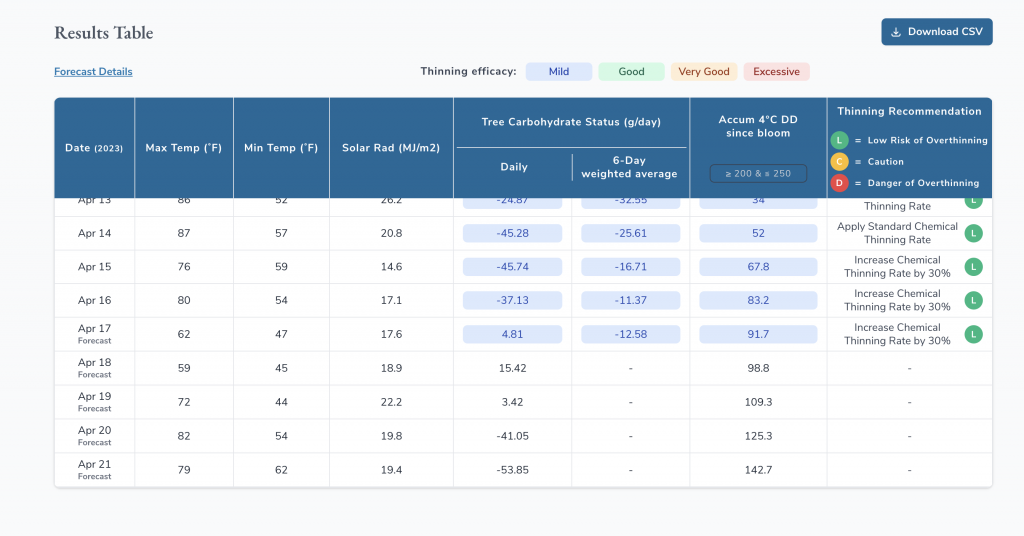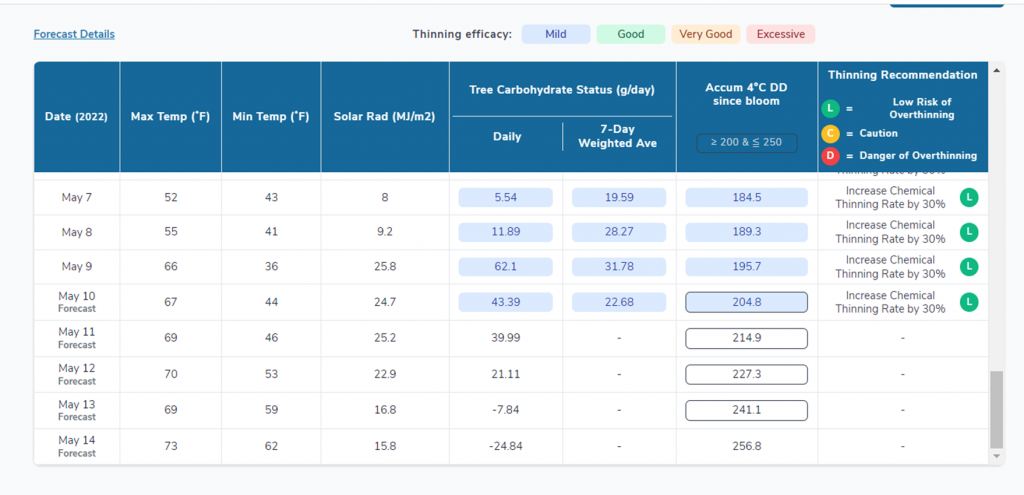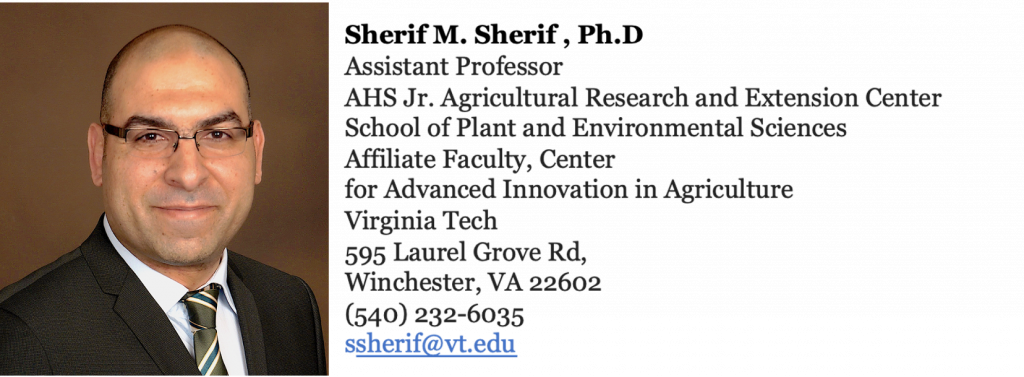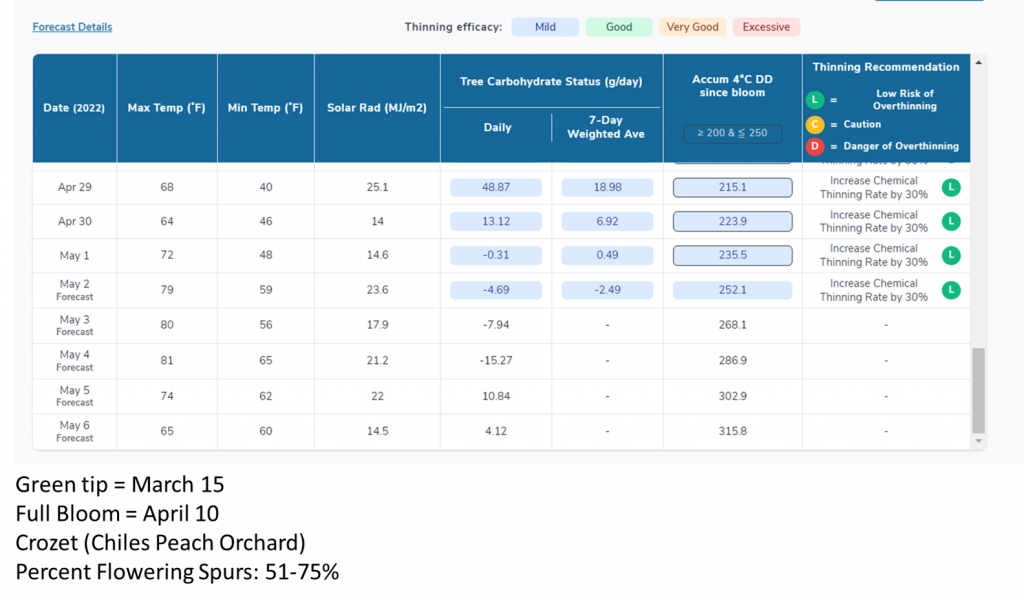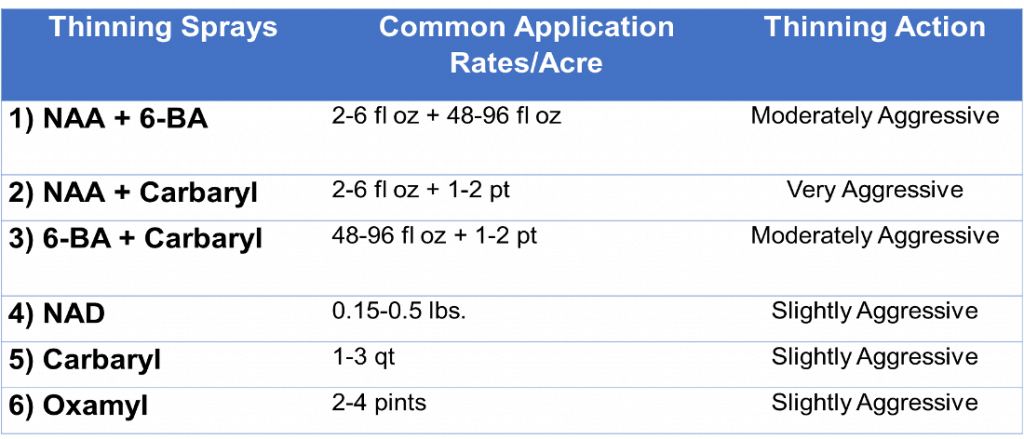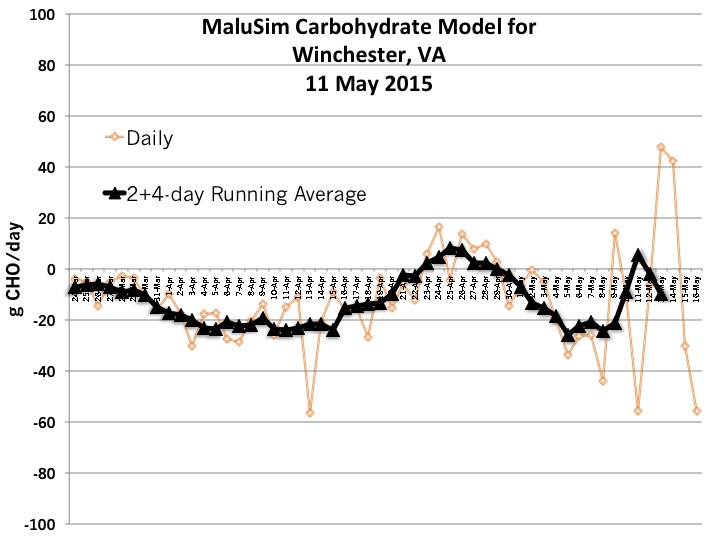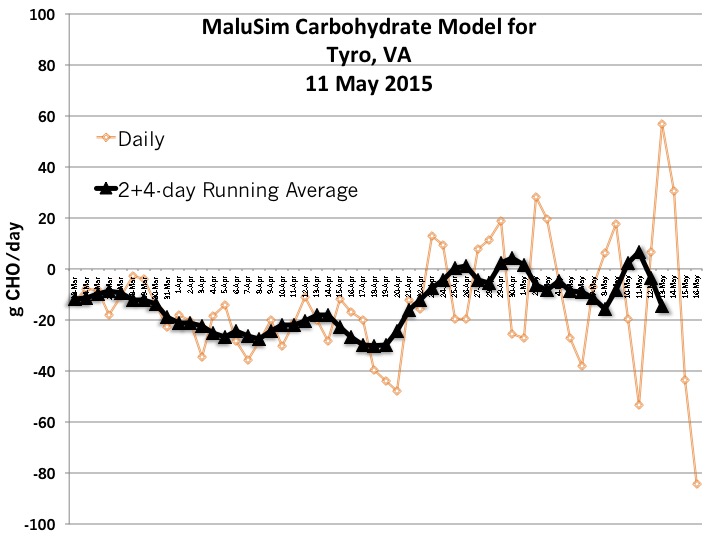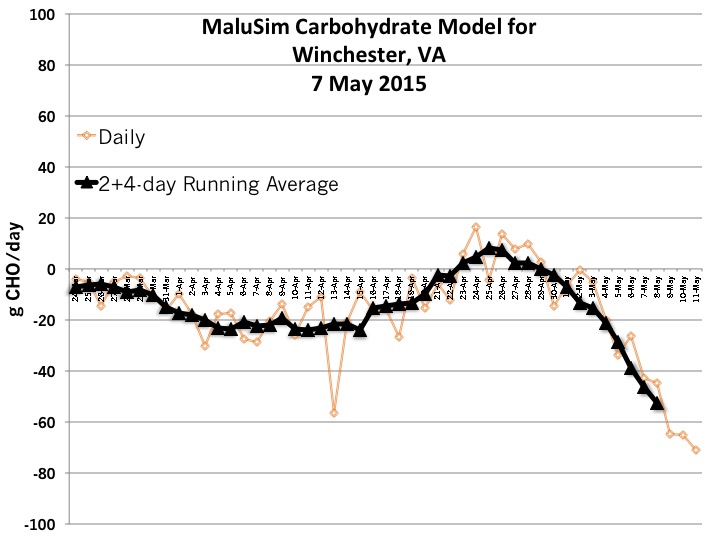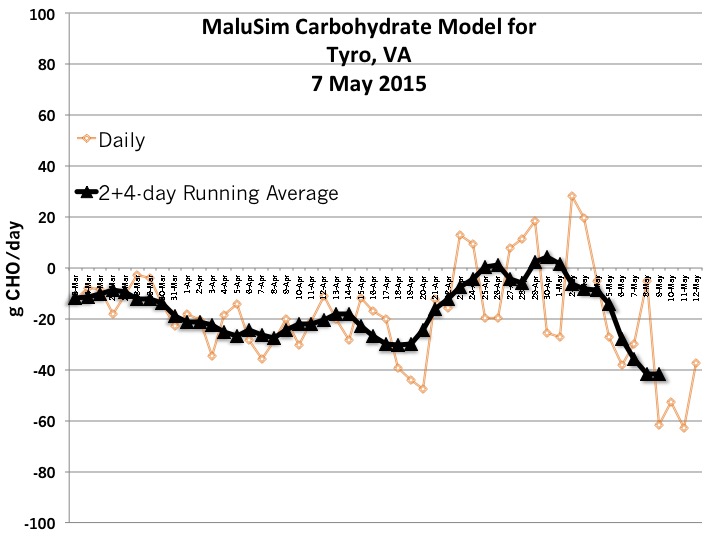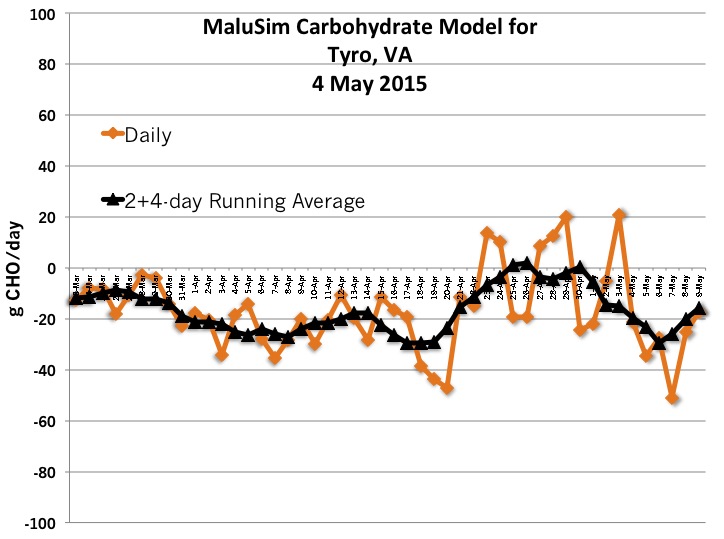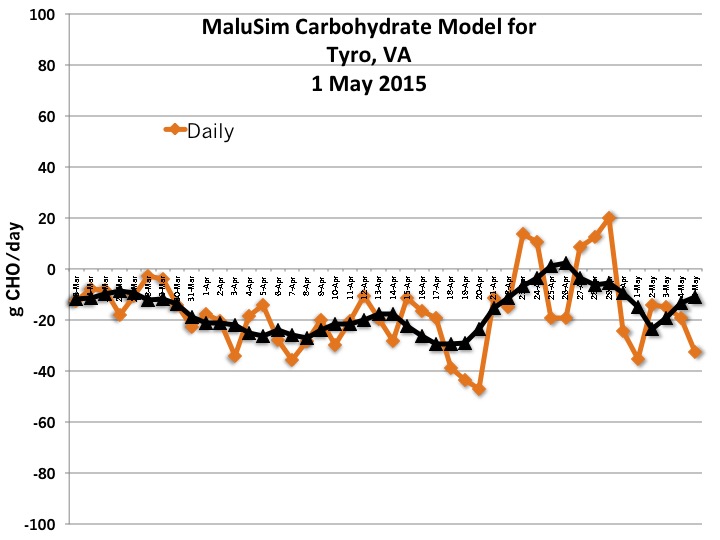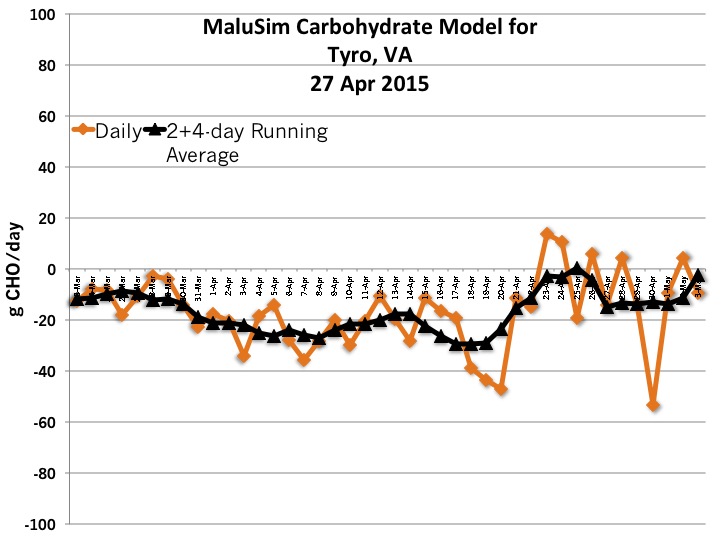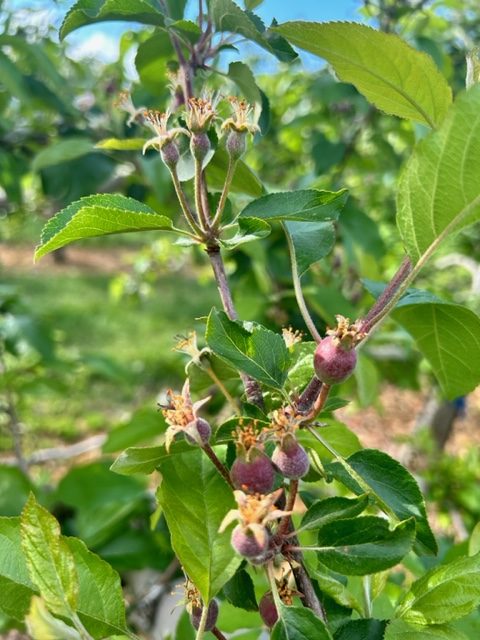
We base our thinning recommendations on the carbohydrate thinning model results from the NEWA website, which I previously discussed in earlier posts. Last week, I ran the model for Central Virginia using Gala’s green tip and bloom dates of March 6 and 29, respectively, along with data from the Crozet weather station (Chiles peach orchard). Based on the model, I recommended that growers apply their primary thinning treatment between April 17 and 20, ideally on Wednesday or Thursday, when both temperature and tree carbohydrate balance were optimal for thinning with 6-BA and NAA products. Those who have already followed these recommendations and applied treatments last week should now see that it was the right decision, given the cool weather and carbohydrate surplus this week.
For growers who did not apply a thinning treatment last week but plan to start this week, I suggest one of two options: A) If the majority of your crop has an average fruit size more than 12mm, apply the treatment tomorrow (April 26), or Thursday or Friday (weather permitting). B) If the majority of your crop has a fruit size under 12mm, wait another week for a warmer temperature window and/or lower carbohydrate levels. This year, it is not uncommon to see two distinct crops with different sizes on the same tree, particularly for Gala, Pink Lady, Fuji, and Reds. If the majority of your crop has an average size of >12mm, follow option A; otherwise, go with option B.
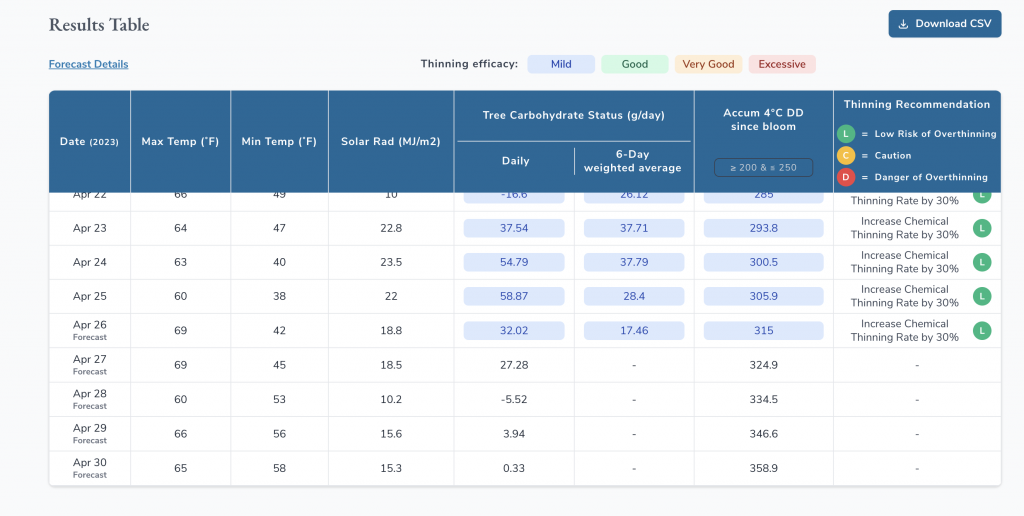
Regarding thinning recommendations for apple blocks in the Winchester/Frederick County area, the model results, using Gala’s green tip and bloom dates of March 7 and April 12, respectively, along with data from the Winchester weather station (VT AHS AREC), show that we have not yet reached the 200-250 accumulated degree days (DD). These values are expected to be reached this weekend (April 29 and 30), coinciding with low carbohydrate levels and relatively acceptable temperatures. However, rain is anticipated over the weekend. With this in mind, I suggest the same two options as I did for Central Virginia. Based on apple blocks at our research center, I would choose option B for the majority of our varieties and wait another week, hoping for better thinning conditions in terms of temperature and tree carbohydrate status. I typically recommend applying 6-BA and NAA only when the temperature is above 65°F on the application day, with the optimal range being 80-85°F. I hope to see warmer temperatures by next Thursday or Friday, allowing for our primary thinning treatment.
